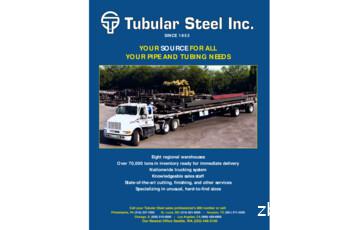WSDOT FOP For ASTM C 1611
WSDOT FOP for ASTM C 1611Standard Test Method for Slump Flow of Self-Consolidating Concrete1.2.Scope1.1This test method covers the determination of slump flow of self-consolidating concrete.1.2The values stated in either inch-pound units or SI units are to be regarded separately asstandard. Within the text, the SI units are shown in brackets. The values stated in eachsystem are not exact equivalents; therefore, each system shall be used independently ofthe other. Combining values from the two systems may result in nonconformance withthe standard.1.3This standard does not purport to address all of the safety concerns, if any, associatedwith its use. It is the responsibility of the user of this standard to establish appropriatesafety and health practices and determine the applicability of regulatory limitationsprior to use. (Warning: Fresh hydraulic cementitious mixtures are caustic and maycause chemical burns to skin and tissue upon prolonged exposure.)1.4The text of this standard references notes and footnotes that provide explanatory material.These notes and footnotes (excluding those in tables and figures) shall not be consideredas requirements of the standard.Referenced Documents2.1ASTM StandardsC 143/C 143MTest Method for Slump of Hydraulic-Cement ConcreteC 172Practice for Sampling Freshly Mixed ConcreteC 173/C 173MTest Method for Air Content of Freshly Mixed Concrete by the VolumetricMethodC 670Practice for Preparing Precision and Bias Statements for Test Methods forConstruction Materials2.2AASHTO StandardsT 119M/T 119Standard Test Method for Slump of Hydraulic-Cement ConcreteT 347Slump Flow of Self-Consolidating Concrete (SCC)2.3WAQTC StandardsTM 2Sampling Freshly Mixed ConcreteWSDOT Materials ManualApril 2017M 46-01.27Page 1 of 6
C 16113.Terminology3.14.6.Definitions of terms specific to this standard:3.1.1halo, n – An observed cement paste or mortar ring that has clearly separated fromthe coarse aggregate, around the outside circumference of concrete after flowingfrom the slump cone.3.1.2spread, n – The distance of lateral flow of concrete during the slump-flow test.3.1.3stability, n – The ability of a concrete mixture to resist segregation of the pastefrom the aggregates.3.1.4viscosity, n – Resistance of a material to flow under an applied shearing stress.Summary of Test Method4.15.Standard Test Method for Slump Flow of Self-Consolidating ConcreteA sample of freshly mixed concrete is placed in a mold shaped as the frustum of a cone.The concrete is placed in one lift without tamping or vibration. The mold is raised, andthe concrete allowed to spread. After spreading ceases, two diameters of the concretemass are measured in approximately orthogonal directions, and slump flow is the averageof the two diameters.Significance and Use5.1This test method provides a procedure to determine the slump flow of self-consolidatingconcrete in the laboratory or the field.5.2This test method is used to monitor the consistency of fresh, unhardened selfconsolidating concrete and its unconfined flow potential.5.3It is difficult to produce self-consolidating concrete that is both flowable andnonsegregating using coarse aggregates larger than 1 in (25 mm). Therefore, this testmethod is considered applicable to self-consolidating concrete having coarse aggregateup to 1 in (25 mm) in size.Apparatus6.1Mold – The mold used in this test method shall conform to that described in FOP forAASHTO T 119.6.2Base Plate – The base plate on which the mold rests shall be nonabsorbent, smooth, rigid,and have a minimum diameter of 36 in (915 mm).Note 1: Field experience and results from the round robin test program have shown thatbase plates made from sealed/laminated plywood, acrylic plastic, or steel are suitable forperforming this test.6.37.Strike-off Bar – As described in FOP for WAQTC T 152.Sample7.1Page 2 of 6The sample of concrete from which test specimens are made shall be representativeof the entire batch. Sample in accordance with FOP for WAQTC TM 2.WSDOT Materials ManualM 46-01.27April 2017
Standard Test Method for Slump Flow of Self-Consolidating Concrete8.C 1611Procedure8.1The slump-flow test shall be performed on a flat, level, nonabsorbent base plate.Position and shim the base plate so it is fully supported, flat, and level.8.2Filling the Mold – WSDOT requires the use of Procedure B.8.2.1Filling Procedure B (Inverted Mold) – Dampen and place the mold, with thesmaller opening of the mold facing down, in the center of a flat, moistenedbase plate or concrete surface. Using a suitable container, fill the entire moldcontinuously (Note 2). The mold shall be held firmly in place during filling.Do not rod or tamp the SCC. Slightly overfill the mold.Note 2: Filling the mold with concrete by using multiple scoops or by pouringfrom a bucket or similar container has been found to be acceptable.9.8.3Strike off the surface of the concrete level with the top of the mold by a sawing motionof the strike-off bar. Remove concrete from the area surrounding the base of the mold topreclude interference with the movement of the flowing concrete. Remove the mold fromthe concrete by raising it vertically. Raise the mold a distance of 9 3 in (225 75 mm)in 3 1 seconds by a steady upward lift with no lateral or torsional motion. Completethe entire test from start of the filling through removal of the mold without interruptionwithin an elapsed time of 2½ minutes.8.4Wait for the concrete to stop flowing and then measure the largest diameter of theresulting circular spread of concrete to the nearest ¼ in (5 mm). When a halo is observedin the resulting circular spread of concrete, it shall be included as part of the diameter ofthe concrete. Measure a second diameter of the circular spread at an angle approximatelyperpendicular to the original measured diameter.8.5If the measurement of the two diameters differs by more than 2 in (50 mm), the test isinvalid and shall be repeated.Calculation9.1Calculate the slump flow using Eq 1:Slump flow (d1 d2)2where:d1 the largest diameter of the circular spread of the concrete, andd2 the circular spread of the concrete at an angle approximately perpendicular to d19.2Record the average of the two diameters to the nearest ¼ in (5 mm).WSDOT Materials ManualApril 2017M 46-01.27Page 3 of 6
C 1611Standard Test Method for Slump Flow of Self-Consolidating Concrete10. Report10.1Report the slump flow to the nearest ¼ in (5 mm).10.2Report results on concrete delivery ticket (i.e., Certificate of Compliance).10.3The name of the tester who performed the field acceptance test is required on concretedelivery tickets containing test results.11. Precision and BiasSee ASTM C1611/C 1611M for precision and bias.Page 4 of 6WSDOT Materials ManualM 46-01.27April 2017
Performance Exam ChecklistWSDOT FOP for ASTM C 1611/C 1611MStandard Test Method for Slump Flow of Self-Consolidating ConcreteParticipant NameExam DateProcedure ElementYes No1. The tester has a copy of the current procedure on hand?2. All equipment is functioning according to the test procedure, and if required, has thecurrent calibration/verification tags present?3. Sample was taken per WSDOT FOP for WAQTC TM 2?4. Molds and base plate dampened and base plate is flat, level, and fully supported?5. Mold filled completely (slightly overfilled)?6. Mold struck off level with top opening?7. Excess material removed from base plate and mold raised 9 3 inches, in3 1 seconds?8. After flow stabilized, measured largest diameter (including halo if necessary)?9. Second measurement taken approximately perpendicular to first measurement?10. First and second measurements agree within 2″?11. Slump flow was reported as an average of the two measurements?12. Slump flow reported to the nearest ¼″?First Attempt: PassFailSecond Attempt: PassFailSignature of ExaminerComments:WSDOT Materials ManualApril 2017M 46-01.27Page 5 of 6
C 1611Page 6 of 6Standard Test Method for Slump Flow of Self-Consolidating ConcreteWSDOT Materials ManualM 46-01.27April 2017
C 1611 Standard Test Method for Slump Flow of Self-Consolidating Concrete. 3. Terminology . 3.1 Definitions of terms specific to this standard: 3.1.1 . halo, n – An observed cement paste or mortar ring that has clearly separated from thecoarse aggregate, around the outside circumferenceof concrete afte
T 304 Page 4 of 12 WSDOT Materials Manual M 46-01.40 January 2022 FOP LIBRARY WAQTC FOP AASHTO T 304 (19) T304_short_21_errata FOP Library - 3 Pub. October 2021 Preparation of Test Samples Obtain the standard graded sample from one of the following: 1. Use the sieve analysis samples from the FOP for AASHTO T 27/11. 2.
ASTM C42 ASTM C293 ASTM C457 7066 SW 44th ST Miami, FL 33155 Contact: Andres Diaz Abdias H. Saenz, P.E. ASTM C215 Ph 305-668-5792 Fax 786-513-3754 ASTM C900 ASTM C4435 ASTM C597 ASTM C642 Jaime Reyes, P.E. ASTM C174 ASTM C215 ASTM D698 ASTM D2167 ASTM C1585 ASTM D4263 ASTM D4564 ASTM D4580 ASTM C1740 ASTM D4263 ASTM
astm a 966, 135, 136 astm d 1298, 139 astm d 1500, 139 astm d 2161, 141 astm e 1025, 63 astm e 1032, 59 astm e 11, 136, 137 astm e 1135, 102, 107 astm e 1316, 80 astm e 1416, 59 astm e 1417, 106–108, 114 astm e 1444, 131–138, 141, 142 astm e 1647, 69 astm e 165, 109, 115 astm e 1742, 59 astm e 709, 132 astm e
*astm a182 *astm a564 *astm a213 astm a778 *astm a249 asms-5613 *astm a269 asms-5639 *astm a276 asms-5640 *astm a312 asms-5647 . astm a512 cdbw & cdew astm a513 dom astm a519 cdsm sae j524/j525 hydraulic ams 5050 fluid line specification astm a135 astm a178 grd a astm a214 astm a500 grd b astm a513 type 1,2 awwa c200
JIS G3459, JIS G3463. GOST 9940, GOST 9941 Nickel Alloy Pipe Specification: ASTM B111, ASTM B161, ASTM B163, ASTM B165, ASTM B167, ASTM B338, ASTM B407, ASTM B423, ASTM B444, ASTM B619, ASTM B622, ASTM B626, ASTM B668, ASTM B677, ASTM B829 or Standards stipulated in the technical agreement. Add:No.3, Jiangnan Road, Jiangnan Industrial Park, Songyang, Zhejiang Province, China Cell: 86-159 .
ASTM D 1056 ASTM D 1056 ASTM D 412 ASTM D 412 ASTM E 162 ASTM E 662 SMP-800- C ASTM E 595 ASTM E 595 ASTM E 595 Rogers Internal ASTM D 746 ASTM D 150 ASTM D 149 ASTM D 495 ASTM D 257 ASTM C 518 Flame Resistance Flame Spread Index (Is) Smoke Density (Ds) Toxic Gas Emissions Rating Total Mass Loss Collected Volatile Condensible Materials (CVCM) Water
embankment and base waqtc fop aashto t 99 / t 180 (21) in-place density 45_t99_t180_short_21_errata e&b/id 13-1 pub. october 2021 moisture-density relations of soils: using a 2.5 kg (5.5 lb) rammer and a 305 mm (12 in.) drop fop for aashto t 99 using a 4.54 kg (10 lb) rammer and a 457 mm (18 in.) drop fop for aashto t 180 scope
ASTM D638 TAS201 ASTM F476 TL-144 International Accreditation ASTM C1167 ASTM E773 ASTM E783 ASTM E987 ASTM E1105 ASTM E1886 Certificate of Accreditation Services Inc. TAS203 ASTM B117 ASTM C39 UL 580 UL 1897 ASTM G154 ASTM D635 ASTM G85 ASTM D790 TAS201 TAS202























